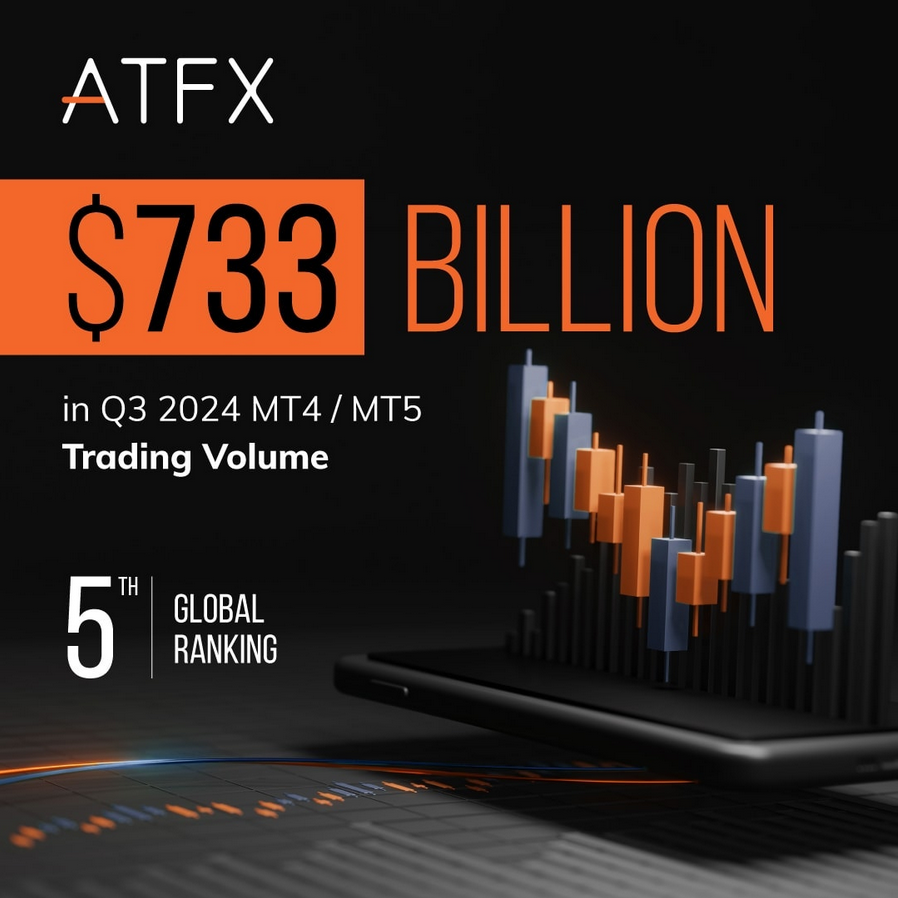The global financial markets are currently experiencing a period of heightened uncertainty and volatility, primarily driven by escalating trade tensions initiated by the United States. The imposition of new tariffs on imports from major economies like China and the Eurozone has triggered retaliatory measures and fueled concerns about a potential global recession. This environment is causing investors to flock towards traditional safe-haven assets, impacting currency valuations and commodity prices.
🇪🇺🇺🇸EUR/USD Outlook
Current Situation: The Euro has shown some resilience, holding near multi-month highs against the US Dollar. This strength was initially supported by a weaker dollar and intensifying trade war tensions. However, recent analysis suggests a potential for Euro weakness due to the uncertain economic outlook for the Eurozone and expectations of further monetary easing by the European Central Bank (ECB). Technical analysis also points towards a bearish trend for the pair.
Key Factors Affecting EUR/USD:
- ECB Monetary Policy: Markets have priced in a high probability of an ECB interest rate cut in the near term, with further easing expected by the end of the year. This expectation of lower interest rates can weigh on the Euro’s attractiveness.
- US Monetary Policy: While the Federal Reserve (FOMC) has maintained a hawkish stance recently, any signals of a potential shift towards easing monetary policy could weaken the US Dollar and provide some support to the EUR/USD pair.
- Eurozone Economic Outlook: The Eurozone economy is projected to experience modest growth in 2025, following below-trend growth in 2024. Factors such as demographic challenges and structural issues could continue to hamper strong economic expansion.
- Trade Tensions: The ongoing trade disputes and the potential for further escalation create uncertainty that can impact both the Eurozone economy (through tariffs on its exports) and the US Dollar (due to its role in the trade conflict and potential economic slowdown).
- Safe-Haven Flows: In times of global economic uncertainty, the US Dollar often benefits from safe-haven flows, which can put downward pressure on the EUR/USD.
Support and Resistance Levels:
- Support: 1.0879, 1.0858, 1.0805, 1.0785
- Resistance: 1.0946, 1.1011, 1.1088, 1.1117, 1.1136, 1.1201
General Forecast: The near-term outlook for EUR/USD appears bearish, influenced by expectations of ECB rate cuts and concerns over the Eurozone economy amidst global trade uncertainty. A break below the support level of 1.0805 could signal a continuation of the downtrend. However, any signs of a shift in US monetary policy or a de-escalation of trade tensions could provide some upside for the pair.
🇬🇧🇺🇸GBP/USD Outlook
Current Situation: The British Pound has experienced a significant decline against the US Dollar, falling below the 1.29 level. This drop is largely attributed to concerns surrounding rising global economic risks stemming from the US tariff policies. Investors worry that these tariffs, even though the UK faces a relatively lower rate, could lead to product dumping and negatively impact the competitiveness of British exports. Domestic concerns about rising inflation also contribute to the Pound’s weakness.
Key Factors Affecting GBP/USD:
- Bank of England (BoE) Monetary Policy: Rising inflation fears within the UK, partly due to increased employer national insurance contributions, are expected to make the BoE cautious about monetary easing. This could provide some underlying support for the Pound.
- UK Economic Outlook: The UK economy is projected to experience modest growth in 2025, but the imposition of tariffs could negatively impact GDP. Weak business sentiment and a potentially weakening labor market also pose challenges.
- Global Trade Environment: The UK’s exposure to the global economy makes it vulnerable to the fallout from trade wars. Concerns about reduced global trade and potential product dumping in the UK market are weighing on the Pound.
- US Dollar Strength: The US Dollar’s safe-haven appeal during times of global uncertainty continues to exert downward pressure on the GBP/USD pair.
Support and Resistance Levels:
- Support: 1.2793, 1.2694, 1.2811, 1.2853, 1.2884
- Resistance: 1.2864, 1.2953, 1.2958, 1.3050, 1.3176
General Forecast: The GBP/USD pair is likely to remain under pressure in the near term due to global trade concerns and a cautious stance from the Bank of England. A break below the support level of 1.2793 could lead to further declines. Any positive developments regarding global trade or a more optimistic outlook for the UK economy could offer some relief and potential for upward correction.
🇺🇸🇯🇵USD/JPY Outlook
Current Situation: The Japanese Yen has strengthened against the US Dollar, reaching its highest level since early October 2024. This strengthening is primarily driven by the global flight to safety as investors seek refuge in the Yen amidst escalating trade war concerns and a weaker US Dollar. While statements from Federal Reserve officials have recently supported the Dollar, the uncertainty surrounding trade policies is diminishing this confidence.
Key Factors Affecting USD/JPY:
- Bank of Japan (BoJ) Monetary Policy: The BoJ is expected to continue raising interest rates this year, although the outlook is clouded by global trade uncertainty and domestic economic conditions. Any further tightening of monetary policy by the BoJ would likely support the Yen.
- US Monetary Policy: The Federal Reserve’s stance on interest rates remains a key factor. While recent communication suggests a pause in rate cuts, any indication of future easing could weaken the US Dollar against the Yen.
- Safe-Haven Demand: The Japanese Yen is traditionally considered a safe-haven currency. During periods of global economic and political turmoil, demand for the Yen tends to increase, leading to its appreciation against other currencies.
- Global Trade Tensions: The escalating trade war is a significant driver of Yen strength as investors become risk-averse and seek safer assets.
Support and Resistance Levels:
- Support: 144.44, 145.90, 145.94
- Resistance: 146.32, 146.93, 147.43, 148.41, 148.48, 149.16, 150.27
General Forecast: The USD/JPY pair is expected to remain under bearish pressure in the near term, driven by safe-haven flows into the Yen due to global trade risks. A break below the support level of 145.90 could lead to further Yen strengthening. Any de-escalation of trade tensions or a shift towards a more hawkish stance from the Federal Reserve could provide some support for the USD/JPY pair.
🇦🇺🇺🇸 AUD/USD OUTLOOK
Current Situation: The Australian Dollar has experienced a significant plunge, falling below the 0.60 level for the first time since the COVID-19 pandemic in March 2020. This sharp decline reflects the Australian Dollar’s status as a risk currency, making it highly sensitive to the meltdown in global equity markets driven by fears of a global recession triggered by US tariffs.
Key Factors Affecting AUD/USD:
- Reserve Bank of Australia (RBA) Monetary Policy: The market turmoil has made the RBA nervous, increasing the likelihood of faster and deeper interest rate cuts than previously planned. Expectations of rate cuts in the upcoming May meeting are weighing heavily on the Australian Dollar.
- Australian Economic Outlook: Confidence data in Australia is expected to weaken, both for consumers and businesses, reflecting the heightened economic uncertainty. The escalating trade tensions pose a significant risk to Australia’s export sector, particularly given China’s position as its largest trading partner.
- Global Risk Sentiment: As a risk-sensitive currency, the Australian Dollar is highly susceptible to shifts in global risk sentiment. The current risk-off environment, driven by trade war fears, is a major negative factor for AUD/USD.
- Commodity Prices: Australia is a major exporter of commodities. A global recession or slowdown in demand from key trading partners like China could negatively impact commodity prices, further weakening the Australian Dollar.
Support and Resistance Levels:
- Support: 0.5750, 0.5775, 0.5810, 0.5860, 0.5907, 0.5943
- Resistance: 0.6045, 0.6100, 0.6120, 0.6133, 0.6150, 0.6215, 0.6252, 0.6273
General Forecast: The AUD/USD pair is expected to remain under significant bearish pressure in the near term due to the prevailing risk-off sentiment and expectations of RBA interest rate cuts. A firm close below the support level of 0.5943 could open a path towards lower levels. Any signs of easing trade tensions or a more positive outlook for the Australian economy could provide some support for a potential upward correction, but the overall trend appears downward.
🇺🇸🇨🇦USD/CAD Outlook
Current Situation: The Canadian Dollar has experienced volatility, declining significantly on Friday before stabilizing somewhat on Monday. The initial drop was triggered by weaker-than-expected Canadian job growth data, which pointed to a cooling labor market and increased concerns about the economic impact of US tariffs.
Key Factors Affecting USD/CAD:
- Bank of Canada (BoC) Monetary Policy: The weaker job growth data could prompt the Bank of Canada to consider a more dovish monetary policy stance, potentially weighing on the Canadian Dollar.
- Canadian Economic Outlook: The sharp decline in Canadian job growth in March signals potential economic weakness. Concerns about the impact of US tariffs on Canadian businesses and the plunge in oil prices (a major Canadian export) are also negative factors.
- US Economic Data: Stronger-than-expected US nonfarm payrolls data provided some support for the US Dollar. However, the positive employment report was overshadowed by the overarching concerns about trade tariffs.
- Oil Prices: As a major oil producer, the Canadian Dollar is sensitive to fluctuations in global oil prices. A significant decline in oil prices can negatively impact the Canadian economy and its currency.
Support and Resistance Levels:
- Support: 1.4104, 1.4110, 1.4160, 1.4181
- Resistance: 1.3720, 1.4225, 1.4309, 1.4330, 1.4386
General Forecast: The USD/CAD pair is likely to remain volatile in the near term. The weaker Canadian economic data suggests potential for further Canadian Dollar weakness. Concerns about US trade policies and oil prices will also continue to influence the pair. A break above the resistance level of 1.4309 could signal further US Dollar strength against the Canadian Dollar.
🟨🇺🇸XAU/USD (Gold) Outlook
Current Situation: Gold prices have experienced a reversal, falling from recent gains. This decline is attributed to investors selling gold to cover losses in other asset classes amidst the sharp sell-off in stock markets driven by escalating trade tensions and margin calls. Despite its safe-haven status, gold is being impacted by this broad market liquidation.
Key Factors Affecting Gold Prices:
- Global Economic Uncertainty: The escalating trade war and fears of a global recession are typically supportive of gold prices as investors seek safe-haven assets. However, the need to cover losses in other markets is currently counteracting this effect.
- US Dollar Strength: A stronger US Dollar generally makes gold more expensive for holders of other currencies, potentially dampening demand and putting downward pressure on prices. The US Dollar’s recent safe-haven appeal has contributed to gold’s pullback.
- Central Bank Policies: Actions by central banks, such as changes in interest rates or gold reserve management, can influence gold prices. The People’s Bank of China’s continued increase in its gold reserves is a supportive factor.
- Inflation Expectations: While inflation has come down from recent highs, persistent geopolitical risks and the potential for economic disruptions due to trade wars could reignite inflation concerns, which tend to support gold as a hedge.
- Investor Demand: Investment demand for gold, often reflected in ETF holdings, can significantly impact prices. Current market volatility is leading to some liquidation of long gold positions.
Support and Resistance Levels:
- Support: 2833, 2859, 2896, 2906, 2930, 2954, 2967, 2976, 2978, 2980, 3000, 3017, 3020
- Resistance: 3046, 3054, 3056, 3057, 3075, 3080, 3087, 3114, 3136, 3167, 3200
General Forecast: The near-term outlook for gold is uncertain. While the underlying factors of global economic uncertainty and trade tensions should support gold’s safe-haven appeal, the immediate pressure from market liquidation and US Dollar strength is weighing on prices. A break below the support level of $3000 could lead to further declines. Conversely, a sustained move above the resistance level of $3054 could signal a resumption of the upward trend. Investors should closely monitor global risk sentiment and US Dollar movements for further clues on gold’s direction.









